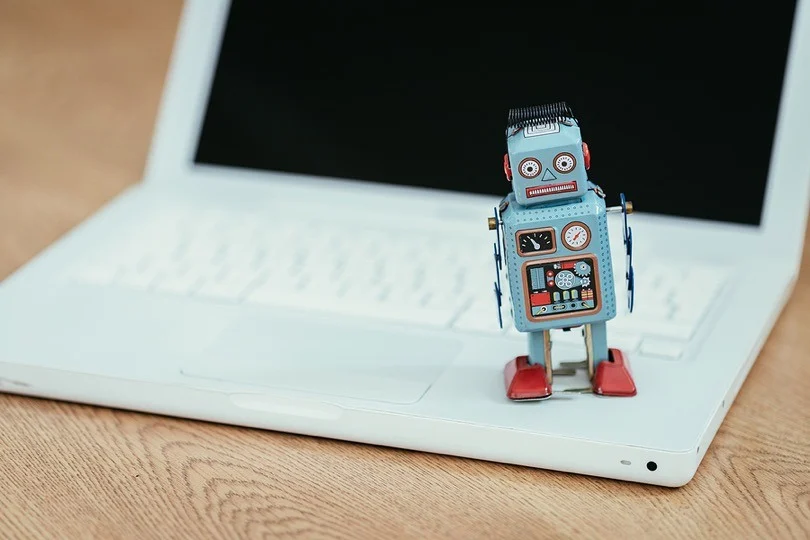5 Examples of eCommerce Chatbots That Will Increase Sales and Revenue
In the competitive world of eCommerce, businesses are constantly seeking innovative ways to enhance customer experience and boost sales. One such innovation is the use of chatbots. eCommerce chatbots are AI-powered tools designed to interact with customers, provide instant support, and drive sales. This blog will explore various examples of eCommerce chatbots that have successfully increased sales and revenue, highlighting their features and benefits.
What Are eCommerce Chatbots?
eCommerce chatbots are automated systems that use artificial intelligence to communicate with customers on websites, social media platforms, and messaging apps. They can handle a variety of tasks, including answering customer queries, providing product recommendations, processing orders, and offering personalized shopping experiences. By automating these tasks, chatbots help businesses save time and resources while improving customer satisfaction.
Benefits of eCommerce Chatbots
1. 24/7 Customer Support: Chatbots provide round-the-clock assistance, ensuring that customers can get help whenever they need it.
2. Personalized Shopping Experience: By analyzing customer data, chatbots can offer personalized product recommendations and promotions.
3. Increased Engagement: Interactive chatbots can engage customers in real-time, leading to higher conversion rates.
4. Reduced Cart Abandonment: Chatbots can remind customers about abandoned carts and offer incentives to complete their purchases.
5. Cost-Effective: Automating customer service and sales processes can significantly reduce operational costs.
Examples of eCommerce Chatbots That Increase Sales and Revenue
1. Nike StyleBot
Brand: Nike
Industry: Sports Apparel and Accessories
Nike’s StyleBot is an excellent example of how chatbots can enhance the shopping experience. The StyleBot helps customers find the perfect outfit by asking a series of questions about their preferences and style. It then provides personalized recommendations based on the customer’s answers. This level of personalization not only improves customer satisfaction but also increases the likelihood of a purchase.
Key Features:
• Personalized product recommendations
• Interactive and engaging user interface
• Integration with Nike’s online store for seamless shopping
Impact:
• Increased conversion rates
• Enhanced customer experience
• Higher average order value
2. Sephora’s Kik Bot
Brand: Sephora
Industry: Beauty and Makeup
Sephora’s Kik Bot is designed to assist customers with beauty advice and product recommendations. The bot engages users by asking about their beauty preferences and needs. It then provides tailored product suggestions and makeup tutorials. By offering personalized advice, Sephora’s Kik Bot helps customers make informed purchasing decisions, leading to increased sales.
Key Features:
• Personalized beauty advice and product recommendations
• Makeup tutorials and tips
• Integration with Sephora’s online store
Impact:
• Improved customer engagement
• Higher conversion rates
• Increased customer loyalty
3. HelloFresh’s Freddy Bot
Brand: HelloFresh
Industry: Meal Kit Delivery
HelloFresh’s Freddy Bot is a chatbot that assists customers with meal planning and recipe suggestions. The bot asks users about their dietary preferences and meal choices, then provides personalized meal recommendations and recipes. Freddy Bot also helps customers manage their subscriptions and track their orders, making the entire process more convenient.
Key Features:
• Personalized meal recommendations
• Recipe suggestions and cooking tips
• Subscription management and order tracking
Impact:
• Increased customer satisfaction
• Higher retention rates
• Boosted sales through personalized recommendations
4. H&M’s Virtual Assistant
Brand: H&M
Industry: Fashion Retail
H&M’s virtual assistant is a chatbot that helps customers find the right clothing items based on their preferences. The bot asks users about their style, size, and color preferences, then provides tailored product recommendations. By offering a personalized shopping experience, H&M’s virtual assistant helps customers find what they’re looking for more quickly, leading to increased sales.
Key Features:
• Personalized product recommendations
• Interactive and user-friendly interface
• Integration with H&M’s online store
Impact:
• Enhanced customer experience
• Increased conversion rates
• Higher average order value
5. eBay ShopBot
Brand: eBay
Industry: Online Marketplace
eBay’s ShopBot is a chatbot that assists customers in finding products on eBay’s vast marketplace. The bot engages users by asking about their preferences and search criteria, then provides personalized product suggestions. ShopBot also helps users compare prices and find the best deals, making the shopping experience more efficient and enjoyable.
Key Features:
• Personalized product recommendations
• Price comparison and deal finding
• Integration with eBay’s marketplace
Impact:
• Improved customer satisfaction
• Higher conversion rates
• Increased sales through personalized recommendations
How to Implement an eCommerce Chatbot
Implementing an eCommerce chatbot involves several steps:
1. Define Your Goals: Determine what you want to achieve with your chatbot, such as increasing sales, improving customer support, or reducing cart abandonment.
2. Choose the Right Platform: Select a chatbot platform that aligns with your business needs and goals. Popular platforms include Tidio, Intercom, and Chatfuel.
3. Design the Chatbot: Create a user-friendly and engaging chatbot interface. Ensure that the chatbot can handle common customer queries and provide personalized recommendations.
4. Integrate with Your Systems: Integrate the chatbot with your eCommerce platform, CRM, and other systems to ensure seamless operation.
5. Test and Optimize: Test the chatbot thoroughly to identify any issues and optimize its performance. Continuously monitor and update the chatbot to improve its effectiveness.
eCommerce chatbots are powerful tools that can significantly enhance the customer experience and boost sales. By providing personalized recommendations, 24/7 support, and interactive engagement, chatbots help businesses increase conversion rates and revenue. The examples of Nike StyleBot, Sephora’s Kik Bot, HelloFresh’s Freddy Bot, H&M’s Virtual Assistant, and eBay ShopBot demonstrate the potential of chatbots in driving eCommerce success.

